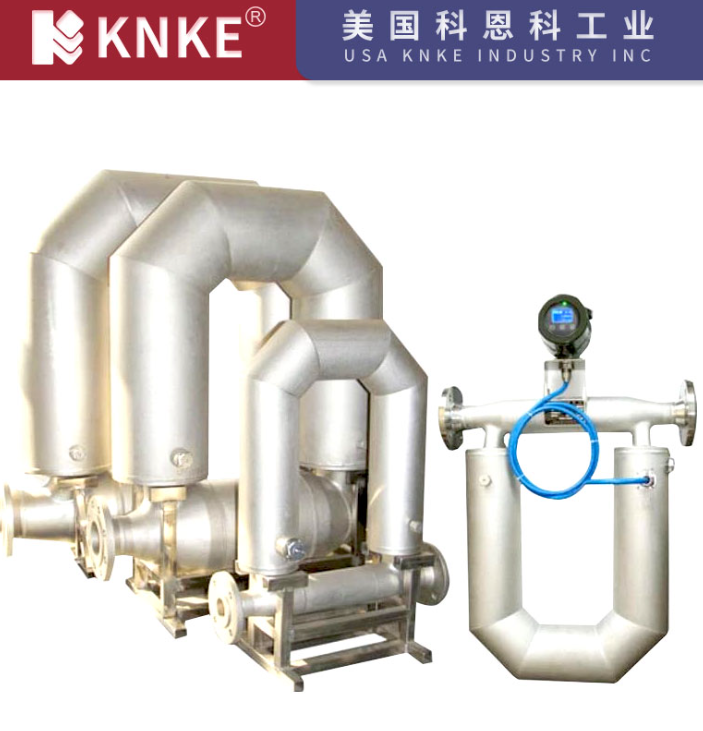Types and Selection of Gas Flow Meters
In industrial pipelines—the “lifelines” of production—gas flow meters function like precise diagnostic tools. Their accuracy directly impacts efficiency and energy management. From blast furnace gas to hydrogen and natural gas, how can engineers select the optimal technology among options like target, vortex, and V-cone flow meters? This article explores the selection logic, based on technical principles and real-world scenarios.
I. Five Mainstream Flow Meter Types: Technology Features & Application Boundaries

Target Flow Meter: The Solution for High-Viscosity Media
Originating in the 1960s, target flow meters measure flow by detecting the force of fluid impacting a target plate. Modern models, such as SST series, use force-sensitive sensors and digital algorithms, achieving ±1.0% accuracy across a wide temperature range (-40°C to 200°C).
These meters excel in low Reynolds number conditions and can handle gas with impurities—like biogas or flue gas—making them ideal for complex chemical processes where Re < 2000.
Vortex Flow Meter: High Efficiency for Clean Gases
Vortex meters operate on the Kármán vortex street principle, using the oscillation frequency of fluids to determine velocity. With no moving parts, maintenance is minimal. They’re ideal for clean gases such as compressed air or nitrogen and operate reliably from -20°C to 250°C.
They offer a wide turndown ratio (1:100) and low pressure loss—just one-third that of orifice plates. However, particles or contaminants can cause sensor fouling, reducing accuracy.
V-Cone Flow Meter: All-Rounder for Harsh Conditions
The V-cone flow meter addresses shortcomings of traditional differential pressure devices. Its cone-shaped restriction reduces pressure loss by 40% and allows installation with just 3D of straight pipe upstream.
With high wear resistance, it’s ideal for slightly contaminated gases like LPG or biogas. It maintains ±0.5% long-term accuracy with a turndown ratio of 1:20, making it a top choice for long-distance pipelines.
Orifice Flow Meter: Cost-Effective for Standardized Scenarios
As one of the oldest differential pressure types, orifice flow meters are simple and affordable—costing just one-third of a vortex meter. Integrated with temperature and pressure compensation, they can measure multiple gas types like steam and fuel gas.
Despite higher pressure loss (8–12 kPa), they remain viable for heating, metallurgy, and other standard applications, especially when accuracy needs are within ±1.5%.
Averaging Pitot (Verabar) Flow Meter: The Anti-Clogging Specialist

Verabar meters use an averaging velocity principle with strategically placed pressure ports that resist clogging—five times more than traditional pitot tubes. This makes them ideal for dusty gases in cement kilns or desulfurization systems in power plants.
With ±1.0% accuracy and optional reverse-blow cleaning, they are widely used in environmental monitoring for their durability in harsh, particle-laden flows.
II. Four-Step Flow Meter Selection Guide: Matching Application to Solution
Step 1: Characterize the Gas Medium
Understanding gas composition is critical.
- For high-viscosity or particle-laden gases (e.g., sludge gas, catalyst-laden exhaust), choose target or V-cone.
- Clean, dry gases (e.g., argon, hydrogen) are best suited for vortex meters.
- Dusty flue gas should use Verabar for clog-free performance.
Example: A chemical plant using vortex meters for dusty exhaust suffered sensor failures within three months. After switching to Verabar, maintenance intervals extended to two years.
Step 2: Evaluate Operating Parameters
Reynolds number, temperature, and pressure must be factored in.
- For Re < 5000, target meters are among the few viable options.
- For high temperatures (>200°C), V-cone meters with heat-resistant designs are preferred (up to 450°C).
- For large diameters (>600 mm), Verabar offers better cost-effectiveness than orifice plates.
Example: An LNG terminal handling 800 mm natural gas lines saved over ¥120,000 annually by choosing Verabar over orifice meters.
Step 3: Consider Installation Constraints
Tight spaces or retrofitting often limit pipe length for installation.
- V-cone meters need only 3D straight-run piping vs. 10D for orifice plates.
- Verabar’s anti-clogging design minimizes the need for purge or heating systems.
Example: A space-constrained retrofit project chose V-cone meters, reducing pipeline modification costs by 30%.
Step 4: Analyze Lifecycle Cost
Initial investment comparison:
Orifice (¥5,000) < Target (¥12,000) < Vortex (¥18,000) < V-cone (¥25,000) < Verabar (¥30,000)
Maintenance cost ranking:
Vortex < V-cone < Orifice
Example: A steel plant found that, despite higher upfront costs, vortex meters saved 40% in total costs over 10 years due to near-zero maintenance needs.
III. Application-Specific Recommendations
- Municipal Gas Distribution: For pipes under DN200, orifice meters with compensation modules offer ±1.5% accuracy. For DN300+ transmission lines, V-cone meters provide superior efficiency due to lower pressure loss.
- Chemical Reactors: Use target meters for polymer-laden gases to avoid vortex clogging. For high-purity gases like hydrogen, vortex meters ensure non-contaminating measurement.
- Environmental Monitoring: When dust levels exceed 500 mg/m³, Verabar with back-purge systems offers stable operation. For desulfurized clean gas, vortex meters reduce cost without compromising accuracy.
- Energy Measurement: LNG fueling stations require cryo-compatible target or V-cone meters to withstand -162°C and ensure material integrity.
Selecting the right gas flow meter isn’t just a matter of matching numbers on a spec sheet. It’s a balance between technical fit and real-world demands. From target meters excelling in sticky fluids to Verabar’s unrivaled anti-clog performance, each device has its ideal use case.
Only by understanding the media properties, installation constraints, and lifecycle economics can we ensure the “eyes of the pipeline” deliver reliable, accurate performance—powering smart, efficient industrial operations with data-driven precision.
